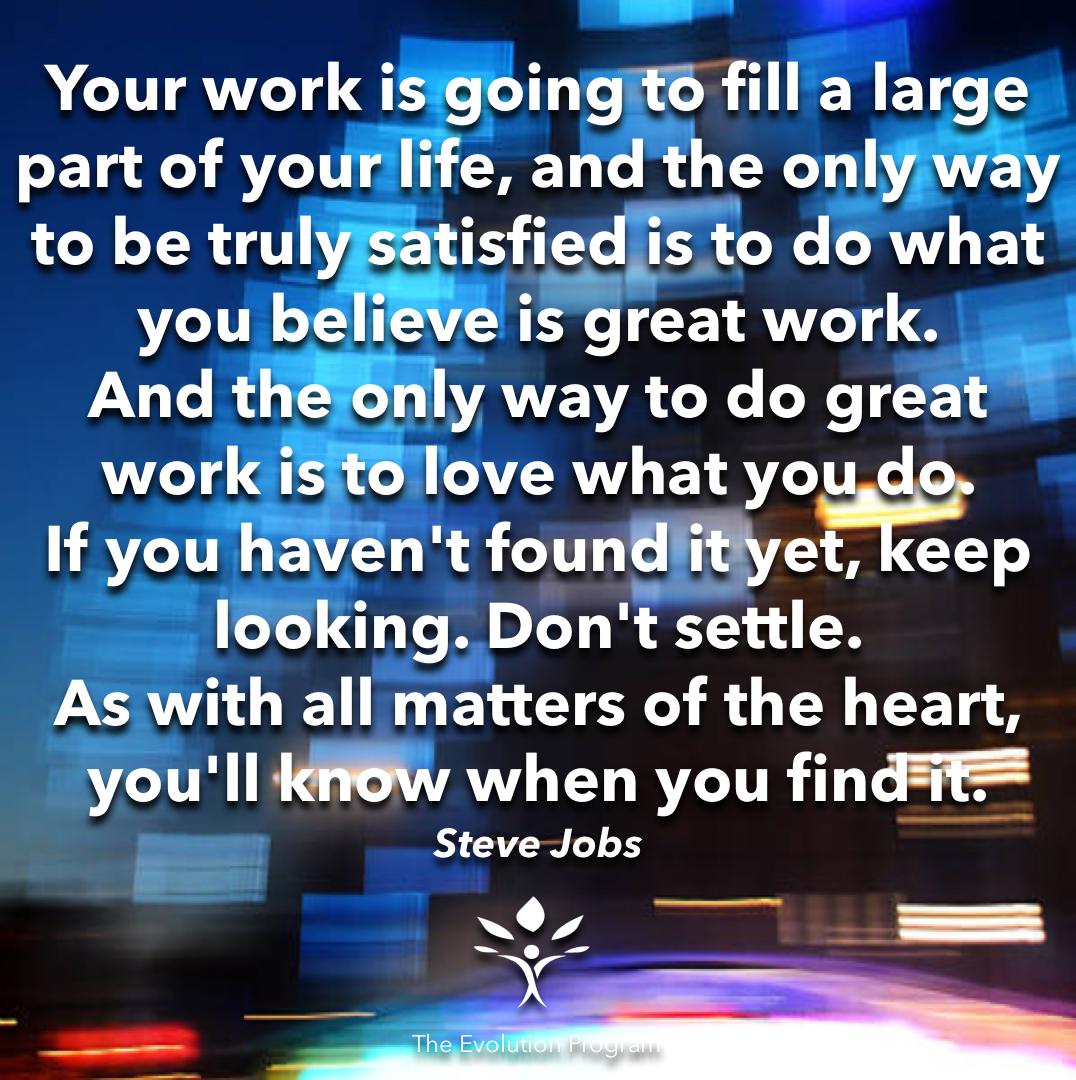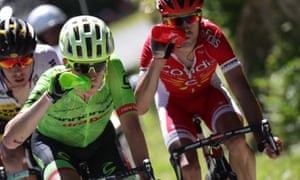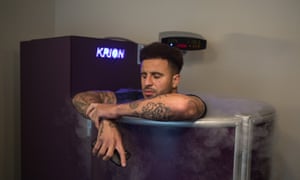Greed and Capitalism
What kind of society isn't structured on greed? The problem of social organization is how to set up an arrangement under which greed will do the least harm; capitalism is that kind of a system.
- Milton Friedman
Friday, April 26, 2019
5 Refreshing Lessons From Elizabeth Warren's Personal Finance Book
MONEY
04/24/2019
5 Refreshing Lessons From Elizabeth Warren's Personal Finance Book
She wrote 'All Your Worth' in 2005. Here's how her advice holds up nearly 15 years later.
Warren promised no quick fixes in the book she wrote about handling money -- just diligence, patience and common sense.
Before Elizabeth Warren became known as Massachusetts’ outspoken Democratic senator and long before she was running for president, she was writing books about money.
Warren spent years as a lawyer specializing in bankruptcy before becoming a Harvard law professor and then devoting her time fully to politics. So it’s safe to say she knows the topic.
Warren and her daughter Amelia Warren Tyagi, a financial consultant with an MBA from the Wharton School at the University of Pennsylvania, co-wrote “The Two-Income Trap” in 2003, which sought to explain why so many middle-class families struggle financially. It became a best-seller, and the pair soon followed up with “All Your Worth: The Ultimate Lifetime Money Plan,” a book that outlines six steps for eliminating your financial woes largely based on the 50/30/20 budgeting rule.
There’s debate as to whether Warren actually invented the 50/30/20 rule, but she certainly popularized it with “All Your Worth.” However, while her budgeting system is the core of this book, there are other important takeaways, too, that often challenge common personal finance beliefs.
Here’s a look at some of the important ― and unexpected ― lessons found in “All Your Worth.”
1. Don’t nickel and dime yourself to death.
Frugal living is definitely not a new concept. But with the recent rise of movements like minimalism and FIRE, extreme frugality has taken center stage in the personal finance world.
Warren and Tyagi, however, rejected the idea of scrimping your way to wealth years ago.
“Here’s a little secret that the other financial books won’t tell you: Savvy money managers don’t spend a lot of time looking for ways to save a few pennies,” they wrote. “They charge right ahead to the big-ticket items, looking to make high-impact changes in the shortest period of time. They don’t sweat the small stuff. And neither will we.”
In fact, Warren’s 50/30/20 budget allocates a generous 30% to flexible spending such as shopping, travel and eating out, more than the 20% for saving and debt payoff. Even so, that doesn’t mean the mother-daughter duo advocate frivolous spending.
2. Focus on the big stuff.
Chapter 3 is titled “Count the Dollars, Not the Pennies” for a reason. When it comes to getting your finances in shape, Warren and Tyagi advocate focusing on a handful of impactful areas rather than trying to make many small changes.
We spend too much time worrying about the price of a bottle of wine or pair of shoes instead of big-ticket items such as our homes, cars and insurance. “If you are overspending on these big monthly bills, then money is draining out of your pocket a lot faster than you can replace it by getting double coupons on your frozen vegetables,” they write.
The goal should be to get your “must haves” in order. Once you do, your budget will be in much better shape and you won’t have to worry about those items again for a long time.
3. Debt steals from your future.
There’s a reason personal finance “gurus” like Dave Ramsey love Warren: She’s staunchly opposed to taking on debt. She says that every monthly payment that goes toward debt is a claim against your future; when you pay your debt off, you open up new financial opportunities.
But unlike other anti-debt experts, Warren recognizes that living completely debt-free isn’t a reasonable option for a lot of people. She emphasizes getting rid of what she calls “steal-from-tomorrow debt” such as credit card debt, payday loans and old medical bills. Debt such as a mortgage, car loan and student loans can be considered good debt, since you’re left with an asset once it’s paid. Still, Warren and Tyagi recognize the danger of all types of debt and stress that keeping them under control is crucial.
4. Renting is OK if it’s what fits your finances.
Just a couple years before the mortgage crisis hit, when everyone else was touting the benefits of buying a home as big as you could possibly afford, Warren and Tyagi were taking a more common-sense approach to homeownership.
Even today, a common myth is that renting is akin to throwing money away since those rent payments don’t lead to owning your own property at the end of the day. Of course, Warren argues, the same would apply to your heating, water and food bills. “At the end of the month there are a lot of things you pay for that you don’t have anything to show for—nothing except that you lived your life … Rent is no different from food, but no one is suggesting you buy a cow.”
If homeownership means stretching yourself thin and living on the precipice of a financial disaster, it’s not worth it. Warren advocates buying a home only after you’ve rid yourself of steal-from-tomorrow debt like credit cards, saved at least 10% down (but ideally 20%) and found a home you can truly afford.
Considering that many millennials are ditching the idea that homeownership is the key to achieving the American Dream, it’s safe to say that Warren’s advice still holds true.
5. Your money problems aren’t all your fault ― but that’s still no excuse.
Warren has long been a fiery opponent of corruption within the financial industry. She was an early advocator of the Consumer Financial Protection Bureau, a supporter of Glass-Steagal 2.0 and remains one of Wall Street’s biggest critics.
So it’s refreshing that Warren and Tyagi don’t buy into what the personal finance industry loves to do: Place the blame for money problems squarely on the shoulders of consumers. They recognize that the banking system and finance industry as a whole are set up to keep Americans poor by design.
“In today’s world, you can get a mortgage that is too big for you—and the banks will help you do it. You can get a car lease that chews up half your income. You can wind up with a student loan bigger than some home mortgages. And as sure as the sky is blue, you can rack up credit card debt without blinking an eye, even if you don’t have 50 cents to make the payments,” they write.
In addition to personal finance advice, you can really get a taste of Warren’s platform as a politician and the types of policies she wants to enact in this book. Still, Warren and Tyagi explain that even though the system is working against you, you can still keep your finances in balance. You just have to know today’s rules.
Overall, “All Your Worth” doesn’t present any radically new ideas, but Warren and Tyagi do challenge a few beliefs held by other personal finance authors and experts. Plus, the book outlines a simple, workable way to build wealth over time. Warren promises no quick fixes, just diligence, patience and common sense, which is exactly what you might expect.
Link: https://www.huffingtonpost.ca/entry/elizabeth-warren-book-all-your-worth-lessons_l_5cbe4b4ae4b0f7a84a73f5a9
Wednesday, April 24, 2019
Information Overload is the Bane of my Life
My daily struggle is to understand what is important, to my situation, in the constant barrage of information on the Internet.
What can and should be ignored?
Is my purpose to seek distraction, novelty and entertainment?
Or is the goal and purpose to my Net Surfing to gain valuable knowledge?
What do I hope to accomplish?
“There are things that attract human attention, and there is often a huge gap between what is important and what is attractive and interesting."
- Yuval Noah Harari
And Donald Trump has not helped make being informed easy with all his mixed messages.
“If the doors of perception were cleansed every thing would appear to man as it is, Infinite. For man has closed himself up, till he sees all things thro' narrow chinks of his cavern.”
― William Blake, The Marriage of Heaven and HellTuesday, April 23, 2019
The secrets of sports recovery
The secrets of sports recovery
The Observer
Sport
There are fortunes to be made in soothing post-exercise aches and pains – so which remedies work best?
Nic Fleming
Sun 21 Apr 2019
USA’s Lawson Craddock and France’s Nicolas Edet competing in the Tour de France, 2016.
Photograph: Kenzo Tribouillard/AFP/Getty Images
For most of the 20th century, getting fitter just involved training harder. However, today’s elite athletes, weekend warriors and even recreational gym-goers know that they have to consider not just their workouts but their bodies’ recovery from them too, especially if they want to get stronger or faster.
From cryotherapy and stretching to protein shakes and compression tights, we are bombarded with suggestions on how to speed the soothing of our aches and pains. It can, however, be hard to know what works best.
Sports scientists don’t have all the answers, but they can help those trying to beat their personal bests, bulk up or just stay fit to sort the restorative strategies from the recovery snake oil.
Stretching
One recovery method that doesn’t require shelling out for expensive kit is stretching. Whether you’re at the gym or have just completed a marathon, everyone around you is at it, flexing their quads, hamstrings and hip-flexors. The idea is that gently extending muscles that are warm and supple after a workout will help them relax and reduce the risk of injury.
Pressure
The human body uses a combination of muscular contractions and one-way valves to shift deoxygenated blood back to the heart. Compression garments, the theory goes, put pressure on peripheral veins, drive blood into larger, deeper veins, and, as a result, increase oxygen delivery to the muscles, reduce inflammation and speed the removal of metabolic waste products.
The makers and sellers of the leggings, shorts, socks and sleeves that promise to squeeze your limbs into shape are doing well; the market is worth around $2.1bn (£1.61bn), and growing at around 5% per year. The evidence that these products improve performance, however, is thin. A 2015 study by
Keeping cool
If you follow your team on social media, you may have come across odd images of semi-naked players in face-masks emerging from what looks like dry ice. Popular in top-level football, rugby and other sports, cryotherapy is also marketed to amateurs seeking to stay on their game.
Whole-body cryotherapy involves spending two to three minutes in a chamber of air cooled to as low as -160C (-256F). Proponents say this sends energy to muscles, reduces blood flow to extremities, reduces inflammation, and speeds recovery from soft-tissue injury. Researchers remain unconvinced. “The evidence is insufficient to support the use of whole-body cryotherapy as a means to prevent or treat muscle soreness after exercise,” says Dr Joe Costello, a senior lecturer in exercise physiology at the University of Portsmouth, who led a 2015 Cochrane review on the practice.
Athletes have long engaged in a more low-tech form of post-exercise body-cooling in cold-water baths, with true masochists such as Andy Murray adding ice. A 2011 meta-analysis found that this could reduce perceptions of muscle soreness. The jury is still out, but many sports scientists think that any physiological effects of cold air or water may be down to a Pavlovian “conditioning effect” whereby an expectation of benefits triggers the release of natural painkilling endorphins and dopamine, a neurotransmitter involved in sensations of pleasure and pain.
Pills
Exercise can increase oxygen consumption as much as 20-fold, which can cause muscle damage, muscle fatigue and inflammation. Some runners and other endurance athletes try to boost their natural defences and reduce muscle soreness with antioxidant supplements, including vitamins C and E, and polyphenols such as resveratrol, sometimes in high doses in the days before and after intense sessions. Others seek the same benefits from beetroot, cherry and pomegranate juices.
Many sports scientists now see this practice is based on an outdated view of oxygen metabolism, which fails to take account of the body’s ability to handle increased free-radical production efficiently. A Cochrane review of 50 studies of antioxidant supplementation in either pill or food form found no significant effect on muscle pain after strenuous physical activity. “Antioxidant supplementation does not appear to reduce muscle soreness after training or other exercise,” says Dr Costello, a review co-author. Some research suggests that antioxidant supplements may even delay muscle recovery and undermine the ability of muscles to adapt in response to training.
Metabolism
Some of the carbohydrates in our food are turned rapidly into fuel for immediate use and some are turned into glycogen to be stored in muscles and the liver for later. Our bodies also need protein to build muscle and repair tissues.
Research carried out in the 1980s suggested that consuming carbs immediately after exercise led to a higher rate of glycogen storage. Many still take protein shakes during a post-exercise “window of anabolic opportunity” of 30-45 minutes, during which they believe their bodies are better at building lean muscle mass.
But science has moved on. A 2013 meta-analysis pointed out that evidence suggesting benefits from immediate post-exercise protein consumption was based on a comparison with training after fasting. With more realistic comparisons, immediate post-exercise protein did not boost muscle synthesis and recovery.
There is little benefit to taking carbs straight after exercise, unless you’re planning a second heavy session later that day. Sure, if you use more fuel by, for example, running a marathon, you’ll need to put more back in, and if you are exercising for an hour or more, you may want to gulp down a few jelly babies to get some extra glucose into your bloodstream. But if you’re looking to refill your muscles’ energy stores in the form of glycogen, it makes little difference whether you do it on the finishing line or at the next meal.
Hydration
In the 1970s, marathon runners were told that drinking fluids would slow them down. The growth of mass-participation runs like the New York Marathon and new research led to changed advice to drink as much as possible during intensive workouts.
The body keeps its core temperature close to 37C (98.6F) by sweating and sending blood to its peripheries. If this fails, and body temperature rises by too much, the result can be heat exhaustion, which makes people feel weak and dizzy. Left untreated, it can lead to rare but potentially fatal heat stroke.
Relaxation
As early as 1936, the renowned endocrinologist Hans Selye noted the similarities in physiological responses in lab rats subjected to different types of stress. More recently, sports scientists have come to appreciate that if athletes are fretting about money, a bullying boss or being dumped, their physical recovery and adaptation to training can be undermined.
Sleep
Exercise causes tiny tears in muscle fibres. The body responds by rebuilding muscles, only bigger and stronger so as to cope better next time around.
Link: https://www.theguardian.com/sport/2019/apr/21/the-secrets-of-sports-recovery
Everything you need to know about recovering from a marathon
Your race is done, the medal is won. But what next? How do you recover properly after running 26.2 miles? Here’s the lowdown on compression gear, ice baths, sleep and when to get back into training
22 Apr 2018
Sat 29 Dec 2018
Science
Stretching
One recovery method that doesn’t require shelling out for expensive kit is stretching. Whether you’re at the gym or have just completed a marathon, everyone around you is at it, flexing their quads, hamstrings and hip-flexors. The idea is that gently extending muscles that are warm and supple after a workout will help them relax and reduce the risk of injury.
Sadly, it doesn’t work. In 2011, Australian scientists carried out a Cochrane review, an analysis of previous research evidence, in which they analysed data from 12 studies.
They concluded: “The evidence from randomised studies suggests that muscle-stretching, whether conducted before, after, or before and after exercise, does not produce clinically important reductions in delayed-onset muscle soreness in healthy adults.”
A 2016 research review found that while stretching could improve flexibility in the long term, it reduced neither post-exercise muscle soreness nor injuries in runners.
“I gave up stretching because it doesn’t work,” says Christie Aschwanden, a science writer and former elite cross-country skier. In her new book Good to Go: How to Eat, Sleep and Rest Like a Champion, she explains how she long ago gave up trying to persuade training partners to listen to the evidence, because their belief in the benefits was so firmly entrenched.
“I gave up stretching because it doesn’t work,” says Christie Aschwanden, a science writer and former elite cross-country skier. In her new book Good to Go: How to Eat, Sleep and Rest Like a Champion, she explains how she long ago gave up trying to persuade training partners to listen to the evidence, because their belief in the benefits was so firmly entrenched.
Contrary to popular belief, stretching does not help reduce the risk of injury. Photograph: Avesun/Getty Images/iStockphoto
Pressure
The human body uses a combination of muscular contractions and one-way valves to shift deoxygenated blood back to the heart. Compression garments, the theory goes, put pressure on peripheral veins, drive blood into larger, deeper veins, and, as a result, increase oxygen delivery to the muscles, reduce inflammation and speed the removal of metabolic waste products.
The makers and sellers of the leggings, shorts, socks and sleeves that promise to squeeze your limbs into shape are doing well; the market is worth around $2.1bn (£1.61bn), and growing at around 5% per year. The evidence that these products improve performance, however, is thin. A 2015 study by
US researchers found that male endurance runners saw no improvements in oxygen consumption and gait when they wore calf-compression sleeves.
When it comes to recovery, the research is more positive – but mixed. Meta-analyses, from 2013 and 2017, combining the results of previous studies, found that compression garments did have small beneficial effects, including reducing muscle soreness after exercise, and speeding muscle-function recovery.
When it comes to recovery, the research is more positive – but mixed. Meta-analyses, from 2013 and 2017, combining the results of previous studies, found that compression garments did have small beneficial effects, including reducing muscle soreness after exercise, and speeding muscle-function recovery.
“I do recommend their use in the recovery period,” says Dr Shona Halson of the Australian Catholic University in Canberra, Australia, who advises elite athletes including football and tennis players and swimmers. “There is evidence of some small positive effects, dependent on the type of garment, the fit and the compression levels.”
Keeping cool
If you follow your team on social media, you may have come across odd images of semi-naked players in face-masks emerging from what looks like dry ice. Popular in top-level football, rugby and other sports, cryotherapy is also marketed to amateurs seeking to stay on their game.
Kyle Walker stands in the cryotherapy chamber during the 2018 World Cup
Photograph: Eddie Keogh For The FA/REX/Shutterstock
Athletes have long engaged in a more low-tech form of post-exercise body-cooling in cold-water baths, with true masochists such as Andy Murray adding ice. A 2011 meta-analysis found that this could reduce perceptions of muscle soreness. The jury is still out, but many sports scientists think that any physiological effects of cold air or water may be down to a Pavlovian “conditioning effect” whereby an expectation of benefits triggers the release of natural painkilling endorphins and dopamine, a neurotransmitter involved in sensations of pleasure and pain.
Pills
Exercise can increase oxygen consumption as much as 20-fold, which can cause muscle damage, muscle fatigue and inflammation. Some runners and other endurance athletes try to boost their natural defences and reduce muscle soreness with antioxidant supplements, including vitamins C and E, and polyphenols such as resveratrol, sometimes in high doses in the days before and after intense sessions. Others seek the same benefits from beetroot, cherry and pomegranate juices.
Many sports scientists now see this practice is based on an outdated view of oxygen metabolism, which fails to take account of the body’s ability to handle increased free-radical production efficiently. A Cochrane review of 50 studies of antioxidant supplementation in either pill or food form found no significant effect on muscle pain after strenuous physical activity. “Antioxidant supplementation does not appear to reduce muscle soreness after training or other exercise,” says Dr Costello, a review co-author. Some research suggests that antioxidant supplements may even delay muscle recovery and undermine the ability of muscles to adapt in response to training.
Metabolism
Some of the carbohydrates in our food are turned rapidly into fuel for immediate use and some are turned into glycogen to be stored in muscles and the liver for later. Our bodies also need protein to build muscle and repair tissues.
Research carried out in the 1980s suggested that consuming carbs immediately after exercise led to a higher rate of glycogen storage. Many still take protein shakes during a post-exercise “window of anabolic opportunity” of 30-45 minutes, during which they believe their bodies are better at building lean muscle mass.
But science has moved on. A 2013 meta-analysis pointed out that evidence suggesting benefits from immediate post-exercise protein consumption was based on a comparison with training after fasting. With more realistic comparisons, immediate post-exercise protein did not boost muscle synthesis and recovery.
There is little benefit to taking carbs straight after exercise, unless you’re planning a second heavy session later that day. Sure, if you use more fuel by, for example, running a marathon, you’ll need to put more back in, and if you are exercising for an hour or more, you may want to gulp down a few jelly babies to get some extra glucose into your bloodstream. But if you’re looking to refill your muscles’ energy stores in the form of glycogen, it makes little difference whether you do it on the finishing line or at the next meal.
Hydration
In the 1970s, marathon runners were told that drinking fluids would slow them down. The growth of mass-participation runs like the New York Marathon and new research led to changed advice to drink as much as possible during intensive workouts.
The body keeps its core temperature close to 37C (98.6F) by sweating and sending blood to its peripheries. If this fails, and body temperature rises by too much, the result can be heat exhaustion, which makes people feel weak and dizzy. Left untreated, it can lead to rare but potentially fatal heat stroke.
The sports drinks industry was quick to emphasise, and sometimes exaggerate, these dangers, telling athletes to drink fluids irrespective of thirst, especially expensive ones containing sciencey-sounding “electrolytes”, AKA salts. In fact, we can easily get all the salts we need, such as sodium and potassium, from food. When our bodies lose salts in sweat during exercise, their concentration in our blood is maintained through changes to water levels. Dehydration causes only a minority of cases of heat stroke.
In fact, sports scientists say, water intoxication, or hyponatremia, is a greater danger.
“Our bodies are equipped with this really good monitor of when we need to hydrate,” says Aschwanden. “It’s called thirst.”
Relaxation
As early as 1936, the renowned endocrinologist Hans Selye noted the similarities in physiological responses in lab rats subjected to different types of stress. More recently, sports scientists have come to appreciate that if athletes are fretting about money, a bullying boss or being dumped, their physical recovery and adaptation to training can be undermined.
In a 2012 study, for example, Finnish researchers found that the lower stress levels of sedentary adults, the more their physical performances improved in response to training.
Relaxation is a vital part of the recovery process, and one that is too often ignored
From yoga and meditation, to massage and flotation tanks, there are any number of ways to relax.
Relaxation is a vital part of the recovery process, and one that is too often ignored
From yoga and meditation, to massage and flotation tanks, there are any number of ways to relax.
A number of studies provide evidence that massage can increase parasympathetic nervous system activity – moving us from stressful “fight or flight” responses to those associated with more relaxed “rest and digest” functions.
Separating out physical and psychological effects is, however, hard because study subjects usually know if they are doing something relaxing.
Separating out physical and psychological effects is, however, hard because study subjects usually know if they are doing something relaxing.
US scientists got around this by putting rabbits through simulated exercises. Those that then received 30 minutes of Swedish massage had less inflammation and improved muscle function, compared to those that did not. It is, however, unclear how applicable the findings are to humans.
When athletes ask Aschwanden for advice on recovery, she suggests building relaxing rituals into their daily routines. “It could be having a hot shower, taking a nap or just sitting still with a book – it really doesn’t matter. Relaxation is a vital part of the recovery process, and one that is too often ignored.”
When athletes ask Aschwanden for advice on recovery, she suggests building relaxing rituals into their daily routines. “It could be having a hot shower, taking a nap or just sitting still with a book – it really doesn’t matter. Relaxation is a vital part of the recovery process, and one that is too often ignored.”
Sleep
Exercise causes tiny tears in muscle fibres. The body responds by rebuilding muscles, only bigger and stronger so as to cope better next time around.
Human growth hormone (HGH), a protein produced in the body, plays an important part in the growth and repair of tissue, including muscles.
Produced in the brain’s pituitary gland, HGH is mostly released during slow wave, or deep, sleep. As humans age, we get less deep sleep, produce less HGH, and take longer to recover from exercise and injury.
Release of HGH is just one of many processes that take place during sleep that affect athletic performance and aid recovery.
Sleep deprivation has been shown to cause slower reaction times, increased pain sensitivity, immune system suppression, greater susceptibility to colds, impaired motor learning and reduced concentration.
Little wonder that the likes of Manchester United and Real Madrid track their players’ sleep, have installed sleep pods at their training facilities and employ the services of sleep coaches.
Little wonder that the likes of Manchester United and Real Madrid track their players’ sleep, have installed sleep pods at their training facilities and employ the services of sleep coaches.
A 2014 study of adolescent athletes aged 12 to 18 found those who slept less than eight hours per night were on average 1.7 times more likely to have been injured during a 21-month period than those sleeping eight hours or more.
“The most powerful recovery tool known to science is sleep,” says Aschwanden.
“The most powerful recovery tool known to science is sleep,” says Aschwanden.
“It may sound boring, and few people get it right, but if athletes truly prioritize sleep, they can see amazing benefits.”
Link: https://www.theguardian.com/sport/2019/apr/21/the-secrets-of-sports-recovery
Everything you need to know about recovering from a marathon
Your race is done, the medal is won. But what next? How do you recover properly after running 26.2 miles? Here’s the lowdown on compression gear, ice baths, sleep and when to get back into training
22 Apr 2018
Sat 29 Dec 2018
Science
Exercise: what’s the bare minimum I can do?
Modern high-intensity workouts are seductively short – but do they offer the same life-extending benefits as established exercise regimes?
Modern high-intensity workouts are seductively short – but do they offer the same life-extending benefits as established exercise regimes?
Friday, April 5, 2019
How do we define a Bear Market

Fisher Investments CanadaVerified account @fisherinvestca Mar 19
How do we define a #BearMarket and how can this effect your #investment strategy?
Monday, April 1, 2019
Venture Capital Explained (To Help Your Raise Money For Your Startup)
Venture Capital Explained (To Help Your Raise Money For Your Startup)
"Banking is very good business if you don't do anything dumb."
- Warren Buffett
You must expect great things of yourself before you can do them.

Success is liking yourself, liking what you do, and liking how you do it.
If you can't explain it simply, you don't understand it well enough.
Success is liking yourself, liking what you do, and liking how you do it.



Subscribe to:
Comments (Atom)





